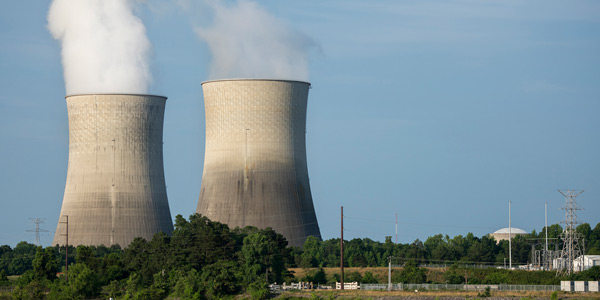By Wayne Barber
The Tennessee Valley Authority’s Watts Bar 2 nuclear unit, which went offline in March because of an equipment problem, is expected to remain down until sometime this summer, according to CEO Bill Johnson.
The 1,100-MW reactor, the nation’s newest, had begun operation in October 2016. It has been out of service since March 23 following a structural failure in the unit’s condenser, a three-story-high heat exchanger.
Because of the tight space inside the condenser, “the logistics of doing this work are quite tricky,” Johnson said during a May 2 conference call on the federally owned utility’s financial results. He said he could not be more specific about the return-to-service date.
Unit 2 was more than half complete when construction on both units was stopped in the 1980s in part because of a projected decrease in power demand. Unit 1 was completed in the 1990s, but TVA didn’t revive plans for finishing Unit 2 until about a decade ago.
In response to a question, Johnson said that TVA has been working for more than a year to address concerns raised by the Nuclear Regulatory Commission and the corporation’s inspector general about the safety culture at Watts Bar. The commission cited a “chilled work environment” in a March 2016 report.
Inspector General Richard Moore said last month that he remained unconvinced that “TVA corrective actions will bring about sustainable change.” Three-quarters of workers in a survey conducted last year for Moore’s office expressed reservations about raising safety concerns because of fear of retaliation from plant managers. Johnson says TVA has taken more than 100 corrective steps, many since the survey was done.
Awaiting Board Members
TVA is waiting for the Trump administration to make more nominations to the authority’s board of directors, Johnson noted during the conference call. The board has nine seats, but only six are filled, and two members will see their terms expire later this month. Johnson said it is possible that the two current directors could remain on board until the end of the congressional session or until successors are put in place. TVA would continue to operate without a board quorum, although it couldn’t undertake new projects, he said.
Clean Line Project
When asked by a reporter, Johnson declined to go into detail on TVA’s view of purchasing wind energy from Clean Line Energy Partners’ Plains & Eastern Clean Line project.
Johnson said that both Clean Line and in-house projects must “meet the same test” on whether a project can provide the lowest-cost price for TVA customers. “There are a lot of moving parts to it” beyond the price that Clean Line has quoted, Johnson said. Although TVA is seeing a decline in power demand, it is continuing to study the Clean Line proposal, he said.
On another matter, Johnson said that the Tennessee Valley region has experienced drought-like conditions in recent months. The situation has depressed hydroelectric output at a time when natural gas prices have been increasing, he said.
TVA reported net income of $313 million for the first half of fiscal year 2017, $32 million more than for the same period last year. (TVA operates on a federal fiscal year.) Sales in the second quarter of fiscal year 2017 were down by about 7% compared to the same period in 2016, driven mainly by milder winter weather.
Johnson said that TVA’s workforce has shrunk from roughly 13,000 employees two years ago to about 10,500 now. In addition to normal attrition, TVA has also used some buyout packages to trim payroll.




